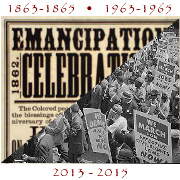Forty years after his death, Rev. Martin Luther King Jr.’s words tragically speak to our current reality.
“The majority of white Americans consider themselves sincerely committed to justice for the Negro,” he wrote in the 1967 book, “Where Do We Go From Here: Chaos or Community?” “They believe that American society is essentially hospitable to fair play and to steady growth toward a middle-class Utopia embodying racial harmony. But unfortunately this is a fantasy of deception and comfortable vanity.”
The Institute for Policy Studies’ report 40 Years Later: The Unrealized American Dream provides evidence of striking little progress in closing the gap between African Americans and whites since Dr. King’s death, particularly in the area of economic equality.
In 1967, African Americans earned 54 cents for every dollar white Americans made per capita. In 2005, African Americans earned 57 cents on every dollar earned by white Americans. In other words, African Americans have made only 3 cents of progress in four decades. At this rate, it will take over 537 years before income parity is achieved. African Americans are similarly situated in terms of wealth. If the racial wealth divide continues to close as slowly as it has since 1983, it will take about 600 years for African Americans to reach wealth equality with whites.
In the late 1960’s, Dr. King recognized that the next phase in the quest for civil rights and equality would focus on the economic divide. Dr. King recognized that this next step would not just require non-violent action and the blood of civil rights martyrs, but also billions of dollars of investment. King proposed such bold initiatives as the Bill of Rights for the Disadvantaged and supported the proposed Freedom Budget of 1966. These proposals called for mass federal investment into the poor and working class of America to secure jobs, housing, and the opportunity to build wealth for all Americans.
King understood that a mass wealth building program was needed. He envisioned more wealth-building legislation, similar to those of the 1930’s and 1940’s which resulted in the great white middle class economy. When the Civil Rights movement succeeded in ruling archaic segregation laws unconstitutional, King figured that this was the time for new wealth building programs that could finally benefit all Americans. Dr. King would not live to see the federal government support the mass investment necessary to make his dream a reality. Forty years later this federal investment for bridging the racial economic divide is still yet to arrive.
Today Congress and the Bush administration spend hundreds of billions of dollars to fight a tragic war abroad. Most recently, the government has decided to bail out investment banks that profited off of predatory subprime lending. This predatory subprime lending has led to record numbers of foreclosures. Yet, there is no money to be found to end the poverty of children in America. Today a third of Black children are born into poverty with similar numbers for Latino children and a tenth of white children in poverty.
From education, to income, to wealth, to incarceration, 40 Years Later: The Unrealized American Dream outlines the various areas where the Black/white divide still remains. This report also provides a list of investment programs which can serve as the starting point in making Kings dream a reality. Forty years after the murder of the dreamer, it is not too late to address the racial injustices that still mark our nation. As the Hebrew Bible reminds us, the Jewish people spent 40 years wandering in the desert, because they lacked faith in the God that had freed them from Egyptian bondage. Our nation has similarly been off track for 40 years, tolerating racial inequalities rooted in white supremacy. It is time to make Kings dream a reality and enact the social policy he deemed necessary over 40 years ago.


